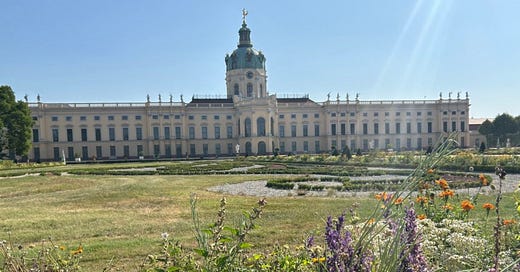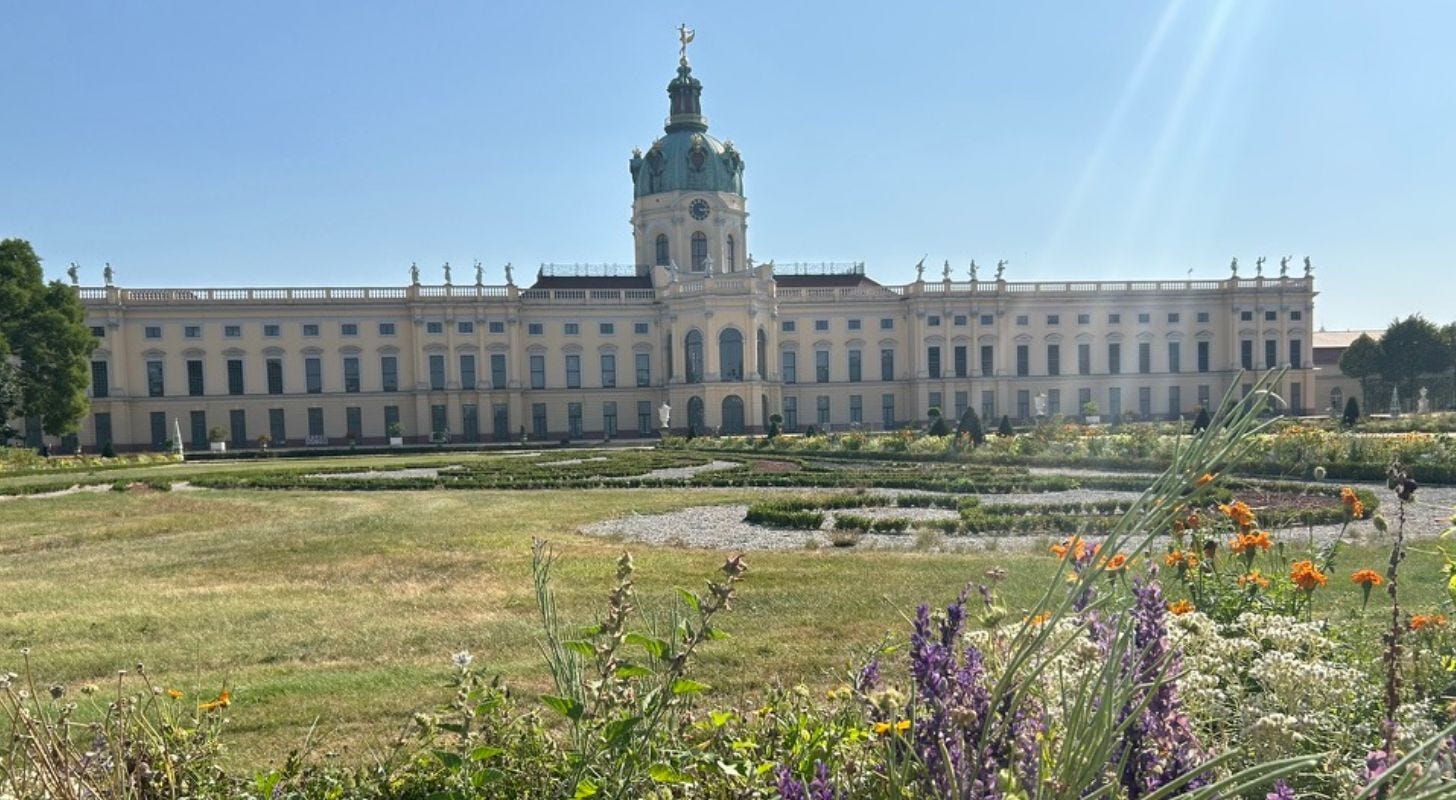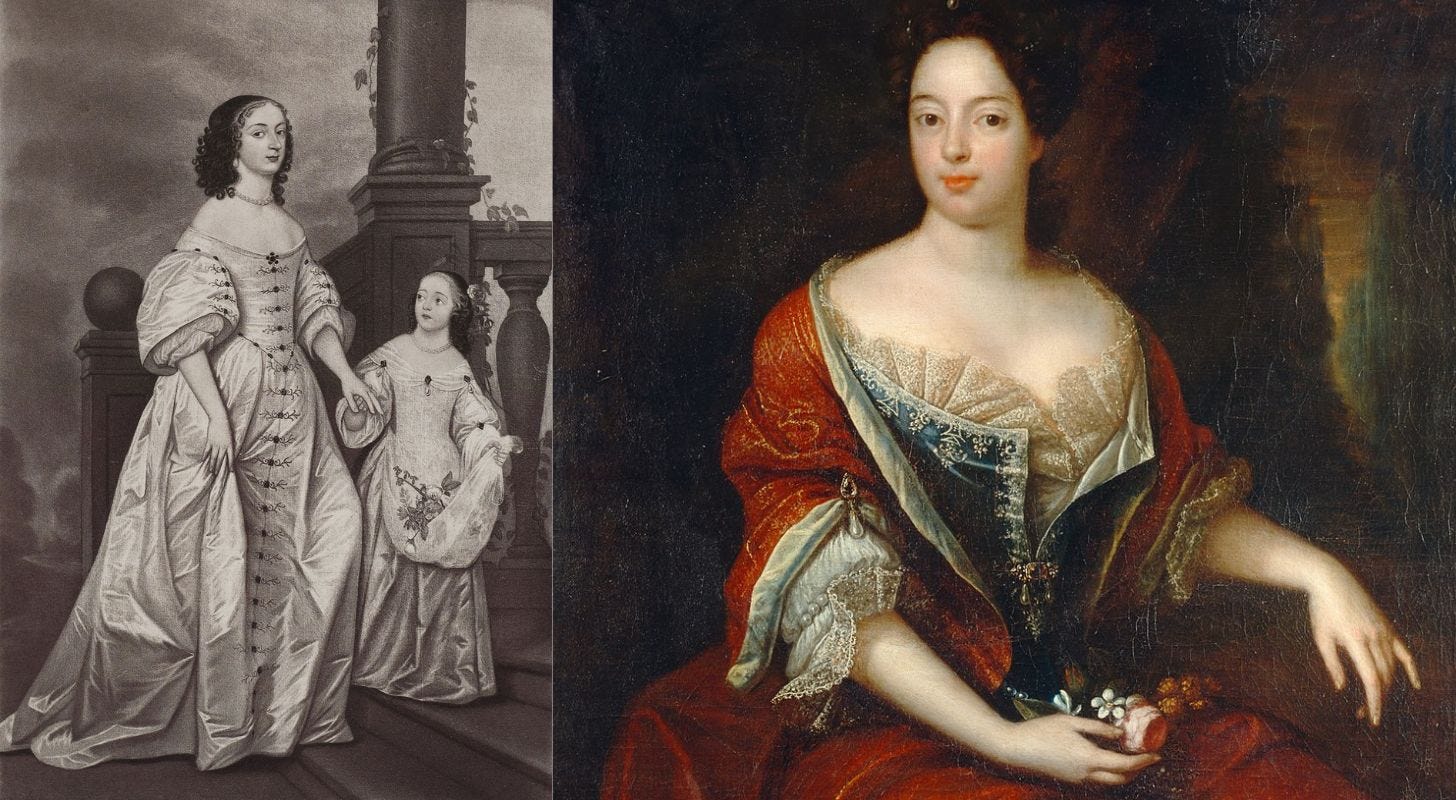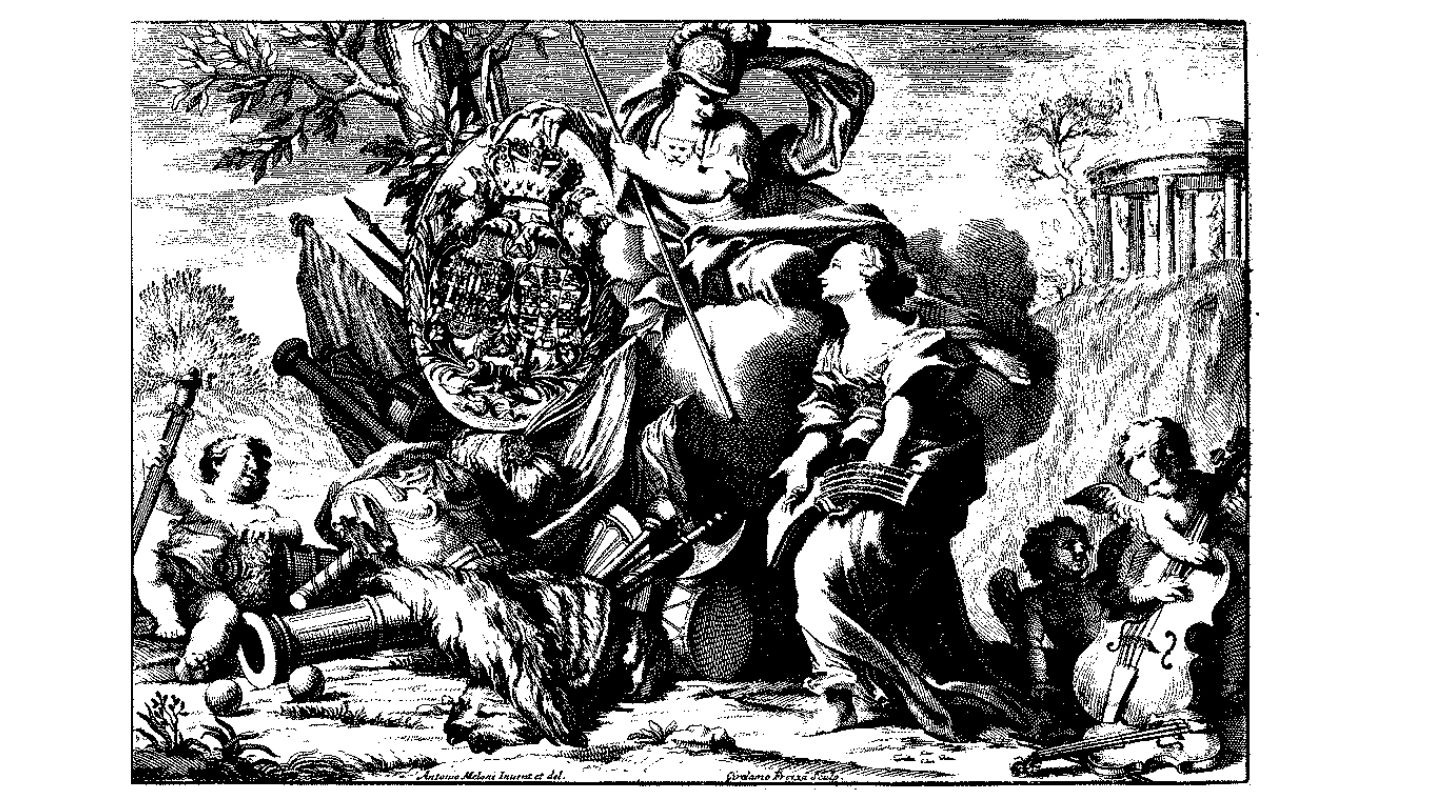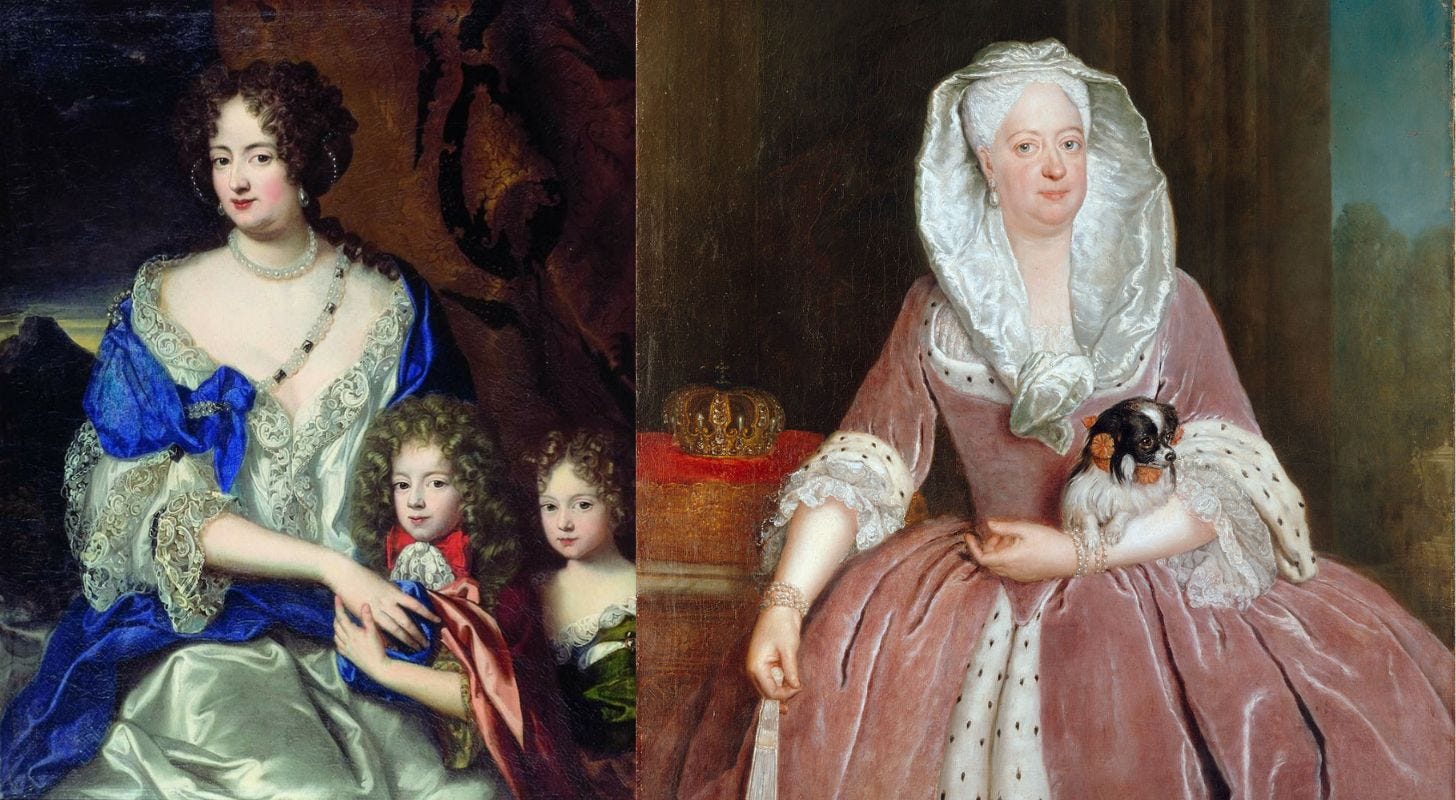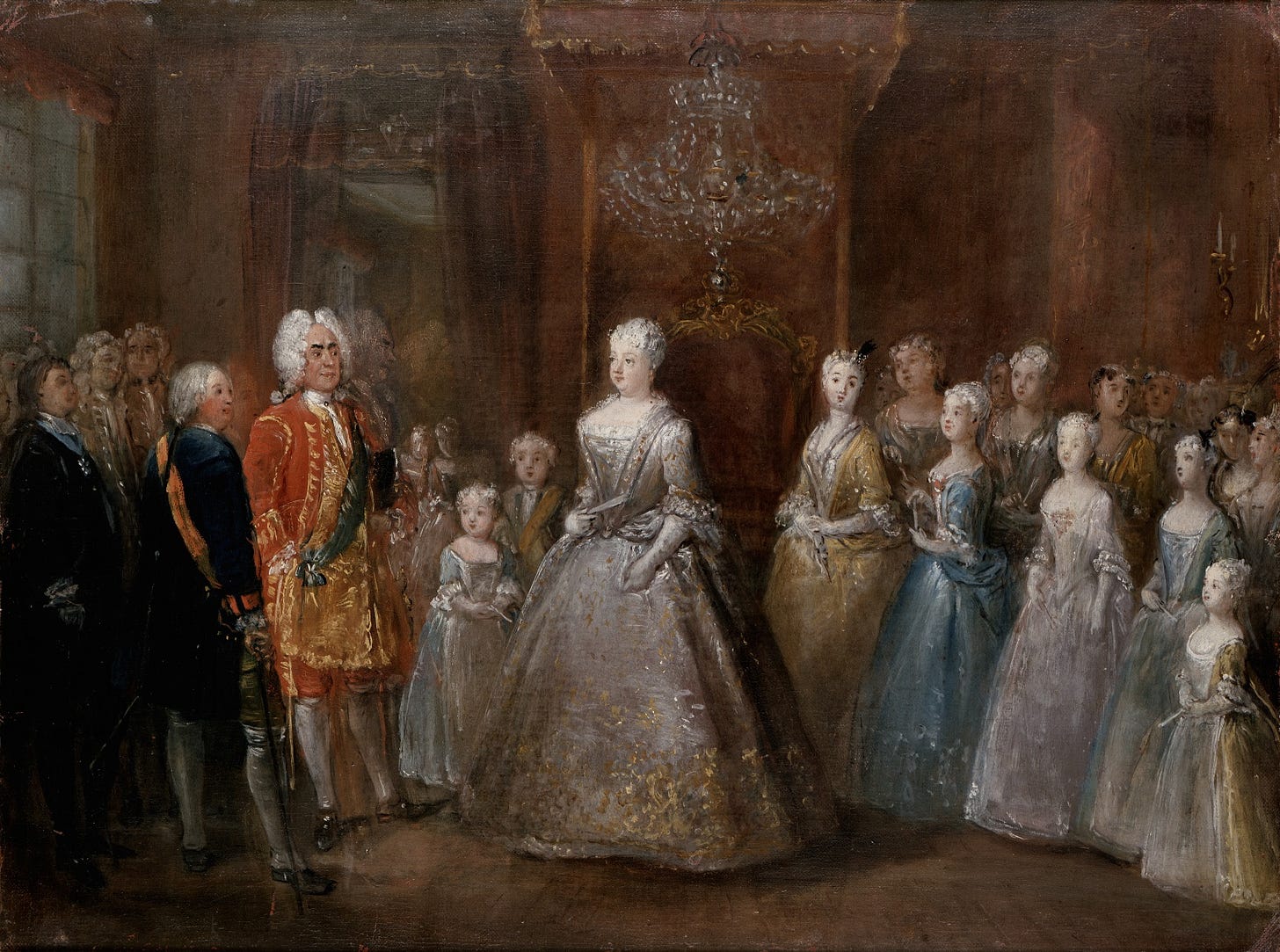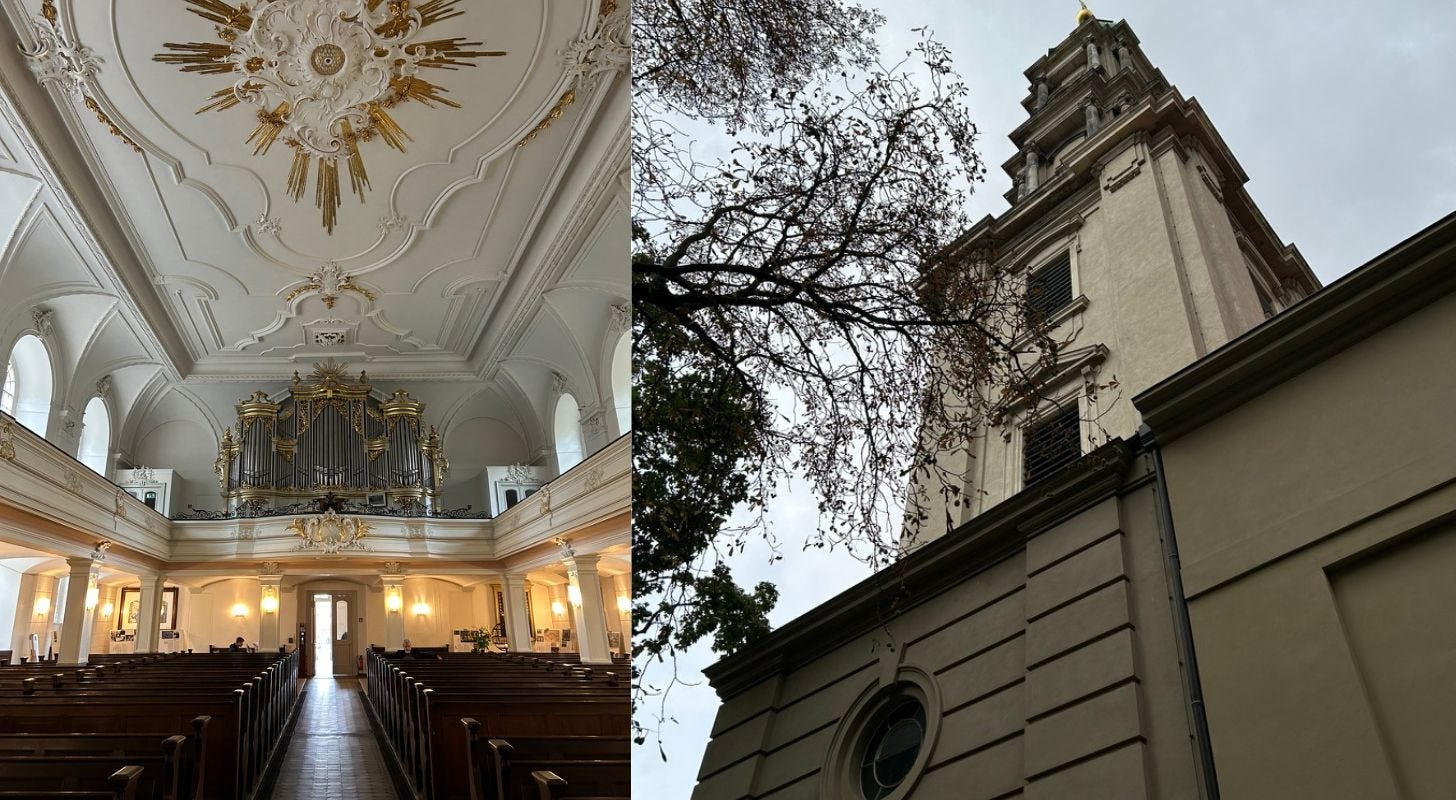🌹🎶 Roses of Berlin 3: The Many Sophias of Berlin
A ramble through generations of dynastic Sophias
🌹🎶 Roses of Berlin
A series of rambles about Women of Berlin
Wandering the streets of Berlin this September, I wondered at the tales and trails left by women who changed the course of the city and herstory. We’ll meet everyday heroines, pious saints, dynastic Queens and political activists as I share weekly posts about my discoveries. This week, we ramble through the dynastic drama surrounding Berlin’s Sophias.
Photo: Charlottenburg, Berlin, the Palace and Gardens of Sophia Charlotte.
3. The Many Sophias of Berlin
Amidst the patriarchs found riding sculpted horses around Berlin, I followed the trails of their long-suffering daughters, wives, aunts, mothers and grandmothers. Generations of women named Sophia, Greek for Wisdom, left significant marks of their presence, intelligence and artistry on the city.
Much European history reads like a dynastic soap opera, as ruling families forged alliances, marriages and wars. Named after Zollern County and Hohenzollern Castle in Swabia, southwest Germany, the Hohenzollern family are first recorded in the chronicles of 1061. Until 1947, they dominated constantly shifting territories across what we now call Germany, Poland, Austria and Romania. Berlin was sculpted by the dynasty’s architectural and political ambitions, becoming Hohenzollern HQ in Brandenburg from 1218 and the capital of Prussia from 1701. Dynastic intermarriages facilitated the exchange of land and power with neighbouring dynasties including the Hanoverians from the northwest state of Lower Saxony in Germany.
Images; (L-R) Electress Sophia and her daughter Sophia Charlotte, Source: Wikipedia
Sophia Charlotte, painted in 1650 by Noël Jouvenet, Source Wikipedia
Within the dynastic web, Electress Sophia of Hanover (1630-1714) was the granddaughter of James VI/ I of Scotland/ England and Ireland, whose son would become George I of England. She raised her Hanoverian daughter Sophia Charlotte (1668-1705) and granddaughter Sophia Dorothea (1687- 1757) in a highly cultured, artistic, intellectual court with French and Italian influences. Sophia Charlotte was married to Hohenzollern Frederick Elector II of Brandenburg, becoming Queen of Prussia when he became Frederick I. Her niece and daughter-in-law Sophia Dorothea became Queen of Prussia and Queen Mother of Frederick the Great (1712 - 1786) as a result of a turbulent marriage to violent, militaristic Frederick William I.
As dynastic marriage was big business, Frederick I gave Sophia Charlotte Lietzow, a town west of Berlin, in exchange for her territories in 1695. Having found herself in ‘the strangest court in the world’ Sophia Charlotte set about building and establishing her own court at Lützenburg Palace, which opened in 1699. Clearly homesick, she frequently returned to Hanover and commissioned Versailles-trained gardener Siméon Godeau to create the first French Baroque gardens in the German-speaking world. Apparently, the King had to ask permission to visit.
Image: The first edition of Corelli’s Twelve Violin Sonatas Op 5 published in 1700, dedicated to Sophia Charlotte, illustration by Giovanni Girolamo Frezza. Source: Wikipedia
Sophia Charlotte’s court became a renowned centre of arts and culture, hosting composers including Arcangelo Corelli (1653–1713) who dedicated the first edition of his Twelve Violin Sonatas to her with the inscription ‘mi trovo in obligo di farmi conóscere / I feel the obligation to present myself through this music.’ Italian Composer Agostino Steffani (1654- 1728) composed four duets for Sophia Charlotte, including a setting of her lyrics - Crudo Amor, morir mi sento / Raw love I feel like dying (1698). Steffani had played Cupid for Max Emanuel of Bavaria (1662-1726) whose marriage proposal to Sophia Charlotte was thwarted by her engagement to Frederick. He wrote a chamber duet for the parted lovers - Io mi parto ò cara vita - which they performed together at the Brussels court. The talented Prussian Queen also conducted music from her harpsichord, which was exceptionally unusual for a woman of her time.
Photos: Sophia Charlotte’s Tomb in Berliner Dom/ Cathedral, decorated with the scribe of Death.
Paying tribute to Sophie Charlotte after her premature death due to a throat infection in 1705, philosopher Gottfried Wilhelm Leibniz (1646 - 1716) said
“The queen had an incredible knowledge even in remote areas and an extraordinary thirst for knowledge, and in our conversations she strove to satisfy this thirst more and more, which would one day have been of no small benefit to the community if death had not taken her away.”
Sophie Charlotte’s Palace and the town of Lietzow were renamed Charlottenburg and are now a western district of Berlin. Her graceful creativity still infuses the serene Palace gardens whilst she lies in state alongside her husband in Berliner Dom.
Images: (L-R) Sophia Dorothea Celle and her children who became Sophia Dorothea Queen of Prussia and George II: source Wiki. Sophia Dorothea of Hanover, Queen of Prussia painted by Antoine Pesne (1737), source Wiki
Sophia Dorothea of Hanover (1687-1757) was the child of a disastrous marriage between Sophia Dorothea Celle and George Louis, Elector of Hanover, who became George I of England. Her father, George, was abusive, adulterous and vengeful - after he discovered his wife was (also!) having an affair, he executed her lover, divorced and imprisoned her in 1694. Sophia Dorothea never saw her mother again and was forced into a political marriage to her aunt Sophia Charlotte’s son in 1706. Focussed on military and administrative reform, Frederick William I of Prussia loved hunting and considered the arts ‘unmanly.’ A violent melancholic who believed women were for breeding, he frequently beat his wife, children and servants. On discovering his son, the future Frederick the Great, was having a homosexual affair and attempting to flee to England, he beheaded the lover in front of his son. Narrowly escaping death, the prince was exiled and imprisoned in 1731 and his sister Wilhelmine was saved by servants from being beaten to death for supporting the escape.
Image: Sophia Dorothea of Hanover, Queen of Prussia (centre) with her daughters, including six-year old Amalia wearing light blue on the left, meeting Augustus II the Strong, Elector of Saxony and King of Poland. Painted by Antoine Pesne in 1729. Source: Wikipedia
Music and the arts were a powerful outlet for dynastic birds in gilded cages.
Despite Frederick William’s reign of domestic abuse, Sophia Dorothea supported her children to develop the artistic talents cultivated by their aunt and grandmother. She took refuge at her court at Monbijou Palace, which stood on the banks of the Spree in Berlin until damaged and demolished in the aftermath of World War II. Her daughter Anna Amalia (1723 - 1787) became a musical composer, curator and Abbess, whose extensive Berlin music library helped preserve the works of composers including JS Bach and Handel. A few of Anna’s many chamber music compositions have survived, including a flute sonata, a harpsichord concerto and a motet, Der Tod Jesu.
Photos: Sophienkirche, Berlin
In 1712, Frederick William’s stepmother Sophia Louise of Mecklenburg-Schwerin (1685-1735) supported the Berlin Spandau community to build a church in 1712. His attempt to erase her contribution by changing the name of the completed church from Sophienkirche to Spandauerkirche was reversed by his son Frederick the Great. The first pastor, Friedrich Lüderwald, selected by Sophia Louise, promised everlasting goodwill and neighbourliness to the local Jewish community, who had allowed the church to be built on their land. For centuries, Christians and Jews coexisted peacefully on what was nicknamed Tolerance Street until Nazi rule transformed it into a site of deportation and death. Today, the site of the desecrated Jewish cemetery is marked by a memorial and the voices of children playing in the restored Jewish school ring around the church. Thirty years after his father visited Germany to celebrate the 100th Anniversary of Baptism and adopted the name Luther, Martin Luther King Jnr’s message of "one great fellowship of love” resounded through Sophienkirche during his visit to a divided Berlin in 1964. In 1975, the church pastor established a Jewish-Christian working group and the community hold an annual memorial service and silent walk on November 9th, the anniversary of Kristallnacht.
Images: (L-R) Sophia Louise of Mecklenburg-Schwerin, painted by Friedrich Wilhelm Weidemann in 1709 Source Wikipedia and Anna Louisa Karsch, painted in 1750 - Wikipedia
Sophienkirche contains a memorial to poet Anna Louisa Karsch (1722-1791), known as Die Karschin or the German Sappho, whose poetry found favour with Frederick the Great. Granted the first divorce in Prussia from her first husband, she escaped a second alcoholic husband when he was conscripted into the army, becoming the first German female to support herself and her children through writing. In her poem Anger At War, When It Lasted Too Long (1764) she rages:
“I loathe with all my heart the first of men who slew
A human fellow-being when the earth was new.
My spirit shrinks from him who for primeval raids
Made sharp the world's first arrow, honed the first of blades”
We can only wonder what the world might have been without that first man of war and how feminine wisdom - Sophia - might have flourished.


